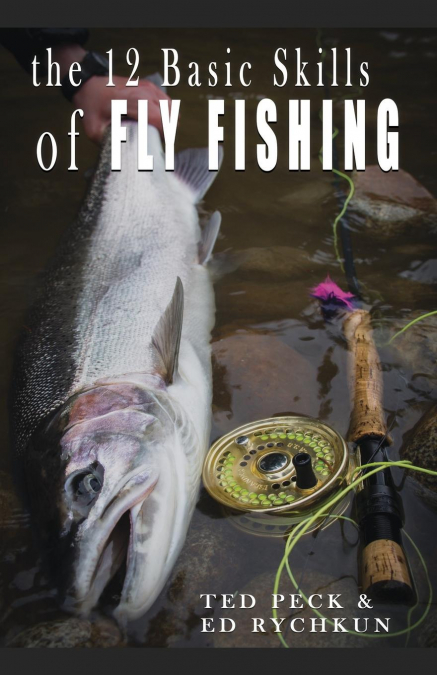
Rychkun Ed / Ted Peck
Cutting through the mystique and complexity surrounding fly fishing, the authors come up with the twelve basic skills needed to understand and enjoy this engrossing art.Long before there existed the town of Whistler, the Sea to Sky Highway, or the BC Rail line from North Vancouver to Prince George and beyond, there was Alta Lake. More specifically there was Rainbow Lodge, located on the northwest shore of Alta Lake. The only modes of transportation in those days were the Union Steamship company and the PGE Railway, allowing travel by sea from Vancouver, up Howe Sound to Squamish dock, then by rail between Squamish dock and Quesnel. It was by the above travel methods, beginning in 1938, that my granddad treated me every spring to a four-day visit to Rainbow Lodge. It was here that he introduced me to the fascinating world of trout fishing. The lodge was owned and operated by Alec and Myrtle Philip, as capable, as well as hospitable, a couple as I ever met. In the spring of 1940, Mrs. Philip took me under her wing and, in the space of less than two days, taught me to fly fish. On a T-shaped float near what she termed her trout nursery she had me casting among the lily pads with a Royal Coachman fly. In short order she taught me not only to cast, but also how to hook, play and release trout. The lessons stand out in my memory because, on that occasion, one of my 6-10 inch rainbows wound itself around a lily pad stem. Suddenly, swiftly and silently, a grayish green, huge fish lunged from the deep water onto the shoal and, before my very eyes, ate my trout with one gulp! With Mrs. Philip's instruction and the aid of a long-handled landing net hastily fetched from the nearby horse barn, I was able to land an eleven-pound Dolly Varden char before my eleventh birthday. From that spring day fifty-five years ago, I was hooked on fly fishing. During my teen years, fly fishing took a back burner position to other angling pursuits. By 1945, salmon fishing, in all its forms, occupied 50 percent of my fishing time. Steelhead trout float fishing also captured me. A retired dentist today, but then a keen and knowledgeable steelheader, introduced me to the many arts and skills of how to outwit the wiliest of the sea-run trout of B.C. His name is David Leonard McNair. That summer of 1945, while working as a field assistant for the Department of Fisheries and Oceans on the Bulkley River at Moricetown, and thanks to Dave's teachings, I landed a 29 lb. 14 oz. Steelhead. As I entered UBC in 1946, fly fishing emerged again, consisting of forays to local beaches, streams, lakes and sloughs. The spreading knowledge of what a wrapping of feathers, fur, tinsel, hair and thread around a hook can create still impresses me. Artificial flies imitating full-grown insects illustrated by books and magazines are only one-fifth of the types of food consumed by trout and other game fish. A few examples of a more complete diet would include shrimps, both fresh and salt water varieties, immature insects, worms, salmon roe, single eggs, small fish, leeches, and even small frogs, mice and voles. During both the summers of 1948 and 1949, my fly fishing abilities were again called upon by a fishing lodge northeast of Kamloops where I was employed as a guide. It was here that I taught many well-heeled Californians and in doing so developed what I call, for want of a better name, the 12 basic skills of fly fishing. -- Ted Peck 3